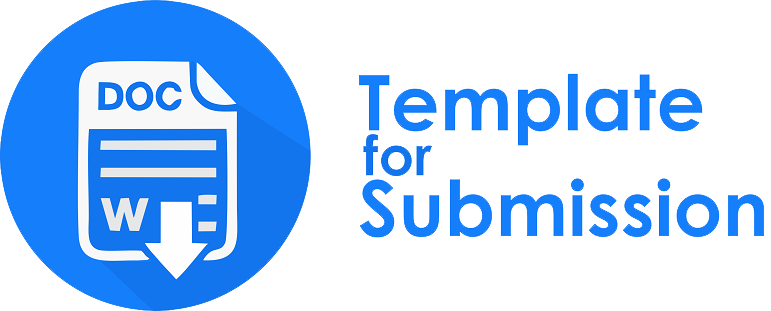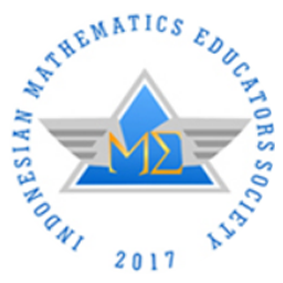DIAGNOSIS OF STUDENTS DIFFICULTIES IN SOLVING WORD PROBLEM RELATED TO THE QUADRATIC INNEQUALITIES USING MAPPING MATHEMATICS
Abstract
The factors causing students' learning difficulties are very diverse, therefore, before deciding the steps that will be used to overcome these learning difficulties, teachers need to diagnose their students' learning difficulties. The purpose of this research is to 1) describe students’ difficulties in solving word problem related to the quadratic inequalities; 2) diagnose the cause of these student difficulties.
This study is descriptive-qualitative research design. In this case, the researcher is the primary instrument. In collecting the data, the researcher used a diagnostic test sheet, interview and field notes. In this study, triangulation of data source is applied to check the validity of the data.
Result of diagnostic test shows that student difficulties are: (a) not identify the problem, (b) not written the information into mathematical model, (c) did not know/forgot the concept of word problem that is GLBB and total revenue, (d) have not been able to make quadratic inequalities, and e) have not been able to determine its solution set. Diagnosis in this research using mapping mathematics, that is a diagram that arrange based on student difficulties. Its research shows that the causes are reading related error, linguistic error, error in understanding inequalities concepts, and error in arithmetic process. The source of causes are students’ cognitive and non-cognitive factors and also pedagogical factors.
Downloads
References
Bautista, D. (2011). Children Solving Word Problems in an Imported Language. Mathematics: Tradition and New Practices. 96-106. AAMT & MERGA.
Çiltaş, A. & Tatar, E. (2011). Diagnosing Learning Difficulties Related to the Equation and Inequality that Contain Terms with Absolute Value. International Online Journal of Educational Sciences, (Online), 3(2): 461-473, (http://www.iojes.net), diakses 25 April 2019.
Einsenmann, H. B. A. & Otten, S. (2011). Mapping Mathematic in Classroom Discourse. Journal for Research in Mathematics Education, 42(5): 451-485.
Gooding, S. (2009). Children's Difficulties with Mathematical Word Problems. Proceedings of the British Society for Research into Learning Mathematics, 29(3): 31-36. UK: University of Cambridge.
Hasselbring, T. S., Lott, A. C., & Zydney, J. M. (2006). Technology-Supported Math Instruction for Students With Disabilities: Two Decades Of Research And Development. Center for Implementing Technology in Education: American Institutes for Research,1-25.
Jitendra, A. K., & Star, J. R. (2012). An exploratory study contrasting high and low-achieving students’ percent word problem solving. Learning and Individual Differences, 22, 151-158. Doi:10.1016/j.lindif.2011.11.003
Joseph, Y. K. K. (2009). Secondary 2 Students’ Difficulties in Solving Non-Routine Problems. Electronic Journal of Mathematics and Technology (Online), (http://www.radford.edu/ejmt), diakses 13 Desember 2019.
Orthon, A. & Frobisher, L. 2005. Insights to Teaching Mathematics. New York: Continuum.
Pape, S. J. (2004). Middle School Children’s Problem Solving Behavior: A Cognitive Analysis from a Reading Comprehension Perspective. Journal for Research in Mathematics Education, 35(3): 187-219.
Suyono & Hariyanto. (2011). Belajar dan Pembelajaran, Teori dan Konsep Dasar. Bandung: Remaja Rosdakarya.
Widdiharto, R. (2008). Diagnosis Kesulitan Belajar Matematika SMP dan Alternatif Proses Remidinya. Yogyakarta: Pusat Pengembangan dan Pemberdayaan Pendidik dan Tenaga Kependidikan Matematika.
William, C. G. (2002). Using Concept Maps to Asses Conceptual Knowledge. Lessons Learned from Research, 203-207. USA: NCTM.
Winkel, W. S. (2012). Psikologi Pengajaran. Yogyakarta: Media Abadi
Copyright (c) 2020 Marlin Blandy Mananggel

This work is licensed under a Creative Commons Attribution-NonCommercial-ShareAlike 4.0 International License.
License and Copyright Agreement
By submitting a manuscript to Jurnal Pendidikan Matematika (JUPITEK), the author(s) certify and agree to the following terms:
- Originality and Authority: The submitting author is authorized by all co-authors to enter into this agreement. The manuscript describes original work that has not been published previously in a peer-reviewed journal, nor is it under consideration for publication elsewhere.
- Approval: Its publication has been approved by all author(s) and by the responsible authorities of the institutions where the work was carried out.
- Rights: The authors secure the right to reproduce any material that has already been published or copyrighted elsewhere.
- Licensing and Copyright: Authors retain the copyright to their work.
- License Grant: The authors grant Jurnal Pendidikan Matematika (JUPITEK) the right of first publication, with the work simultaneously licensed under the Creative Commons Attribution-NonCommercial-ShareAlike 4.0 International (CC BY-NC-SA 4.0).
- Self-Archiving: Authors are permitted and encouraged to deposit the published version of their article in institutional repositories, on their personal websites, and other academic platforms, with proper acknowledgment of its initial publication in Jurnal Pendidikan Matematika (JUPITEK).






.png)


